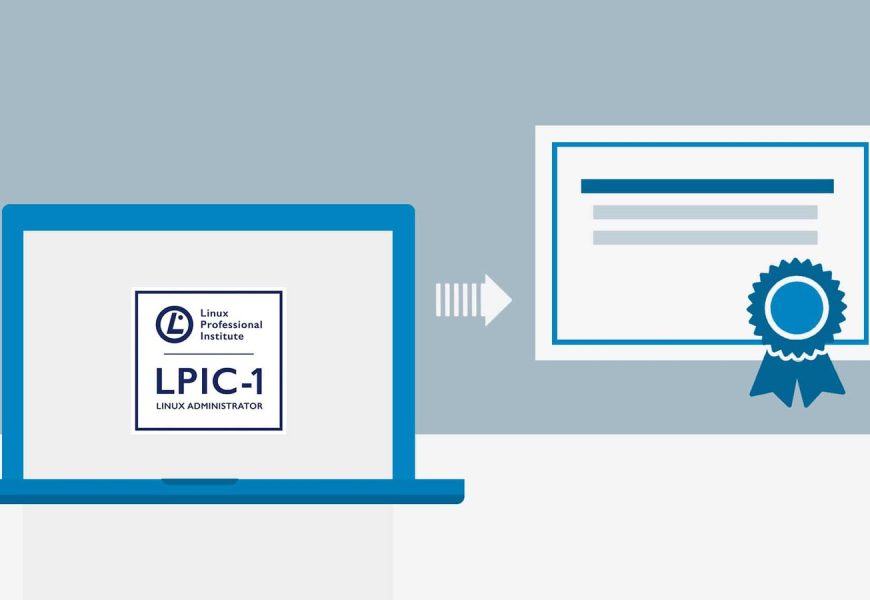The LPIC-1 certification, offered by the Linux Professional Institute (LPI), is one of the most respected Linux certifications in the industry. It is the foundational certification for Linux system administrators, proving their ability to manage Linux systems. The LPIC-1 Exam 101, also known as Exam 101-500, is part of a two-part series that assesses a candidate’s competence in fundamental Linux system administration tasks. Version 5.0 of this exam came with updates that reflect current technology trends and practices in Linux system administration.
One of the best ways to prepare for this exam is by taking practice tests. Practice tests like the LPI 101-500 Practice Test serve as invaluable learning tools, offering insights into the real exam format, types of questions, and topics covered. This article will explore the importance of using the LPI 101-500 practice test in preparation for the LPIC-1 exam, its benefits, tips for effective use, and much more.
Overview of the LPIC-1 Exam 101
The LPIC-1 is a Linux certification designed for junior Linux administrators. The exam consists of two parts: Exam 101 and Exam 102. Exam 101 covers a wide range of fundamental Linux topics, such as system architecture, Linux installation, and package management. It tests your ability to work with basic Linux commands, set up hardware, and configure essential services.
Exam 101-500, which is part 1 of 2 for LPIC-1, is aimed at validating the candidate’s foundational knowledge of Linux systems. After passing both Exam 101 and Exam 102, you’ll become LPIC-1 certified, which can enhance your job prospects as a Linux system administrator.
What is the LPI 101-500 Practice Test?
The LPI 101-500 Practice Test is a simulation tool that mimics the actual LPIC-1 Exam 101, designed to give you a taste of what to expect. It consists of multiple-choice questions and practical tasks that reflect the structure and content of the real exam. By using this test, you can assess your preparedness, identify gaps in your knowledge, and get familiar with the exam format.
Some key features of the LPI 101-500 Practice Test include:
- A comprehensive collection of practice questions.
- Questions covering the exact topics in the LPIC-1 exam.
- Timed quizzes that simulate the actual exam’s pressure.
- Detailed explanations for every question, allowing you to learn from your mistakes.
Why the LPI 101-500 Practice Test Is Crucial for Exam Preparation?
Key Benefits of Taking the LPI 101-500 Practice Test:
- Familiarity with Exam Format: The practice test is designed to resemble the actual exam in terms of format, question types, and time constraints. This familiarity reduces anxiety on the exam day.
- Assessing Knowledge: The practice test allows you to evaluate your strengths and weaknesses. It helps you identify areas where you need to focus more.
- Improving Time Management: Since the real exam has time limits, the practice test helps you hone your ability to manage time effectively and answer questions within the time frame.
- Boosting Confidence: Regularly taking practice tests can increase your confidence, as you’ll feel more prepared and ready to tackle the actual exam.
- Reinforcing Concepts: Repeated exposure to questions helps reinforce key concepts, making them easier to recall during the exam.
- Track Progress: By taking multiple practice tests, you can monitor your progress over time and track improvement, ensuring you are ready for the actual exam.
Key Topics Covered in the LPIC-1 Exam 101, Part 1 of 2, Version 5.0
The LPIC-1 Exam 101, part 1 of 2, covers several important topics. Below is a list of the key objectives:
| Topic | Description |
|---|---|
| System Architecture | Understanding hardware architecture, CPU types, memory concepts, and BIOS setup. |
| Linux Installation and Package Management | Installing Linux, partitioning, managing software packages, and package managers like apt, yum, and rpm. |
| GNU and Unix Commands | Using basic Linux commands like ls, cp, mv, chmod, grep, etc. |
| Devices, Linux Filesystems, and Filesystem Hierarchy | Working with devices, understanding file systems, mounting and unmounting, and the Linux filesystem hierarchy. |
| Shell Scripting and Management | Basic shell scripting, managing shell environments, and performing system tasks with scripts. |
| User Interfaces and Desktops | Working with text-based and graphical user interfaces. |
| Administrative Tasks | Managing user accounts, groups, and permissions. |
Pros and Cons of Using the LPI 101-500 Practice Test
Pros:
- Simulates Real Exam Environment: The practice test helps you become familiar with the format and pressure of the actual exam.
- Comprehensive Coverage: It covers all the topics required for Exam 101, ensuring that no important concept is left out.
- Immediate Feedback: Practice tests provide instant results, allowing you to understand what you got right and wrong.
- Flexible Study Tool: You can take practice tests as many times as needed to reinforce your knowledge.
- Cost-Effective: Often cheaper than expensive training courses and boot camps.
Cons:
- Limited Interaction: While it helps with theory, the practice test cannot simulate hands-on experience with real Linux systems.
- Potential Over-Reliance: Relying solely on practice tests without actual hands-on practice could leave gaps in your practical skills.
- Risk of False Confidence: Scoring well on a practice test doesn’t guarantee success in the real exam if the test taker doesn’t put in the effort to review incorrect answers.
How to Use the LPI 101-500 Practice Test Effectively?
To maximize your use of the LPI 101-500 Practice Test, follow these tips:
- Take the Test Multiple Times: Repeated exposure to questions ensures better retention of concepts.
- Review Incorrect Answers: After completing each practice test, spend time reviewing the explanations for the questions you got wrong.
- Track Your Progress: Keep track of your scores over time. This helps you identify weak areas to focus on.
- Focus on Weak Areas: If you consistently score poorly on certain topics, spend extra time reviewing those concepts.
- Simulate Exam Conditions: Take the practice tests in a timed, distraction-free environment to simulate the actual exam scenario.
Common Mistakes to Avoid While Taking Practice Tests
- Not Reviewing Mistakes: Simply taking the test and moving on can limit learning opportunities. Always review what went wrong.
- Skipping Questions: Don’t rush through questions. Spend enough time analyzing each one.
- Overconfidence: Don’t assume that doing well on practice tests guarantees a pass. The real exam might have different question difficulty.
- Avoiding Weak Topics: Don’t neglect areas where you’re weak. Practice tests highlight weak points—use them as a tool for improvement.
Conclusion
The LPI 101-500 Practice Test is an essential study tool for anyone preparing for the LPIC-1 Exam 101. It helps you gain familiarity with the exam format, reinforces core concepts, and boosts confidence. While practice tests are crucial, they should be used alongside hands-on experience and comprehensive study materials to ensure holistic exam preparation.
By following best practices for using the LPI 101-500 Practice Test, you can increase your chances of passing the LPIC-1 Exam 101 and earning your certification, making you a valuable asset in the competitive Linux system administration field.
FAQs
1. How many questions are in the LPI 101-500 practice test?
The number of questions can vary depending on the provider of the practice test. Typically, these tests include around 60–80 questions, resembling the structure of the actual exam.
2. How long is the LPIC-1 Exam 101?
The actual LPIC-1 Exam 101 lasts 90 minutes. The practice tests also help you manage your time effectively within this time frame.
3. Can the LPI 101-500 Practice Test guarantee a passing score?
While the practice test is a valuable tool for exam preparation, it cannot guarantee a passing score. It is essential to combine practice with other study resources.








